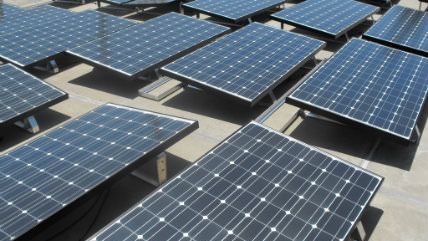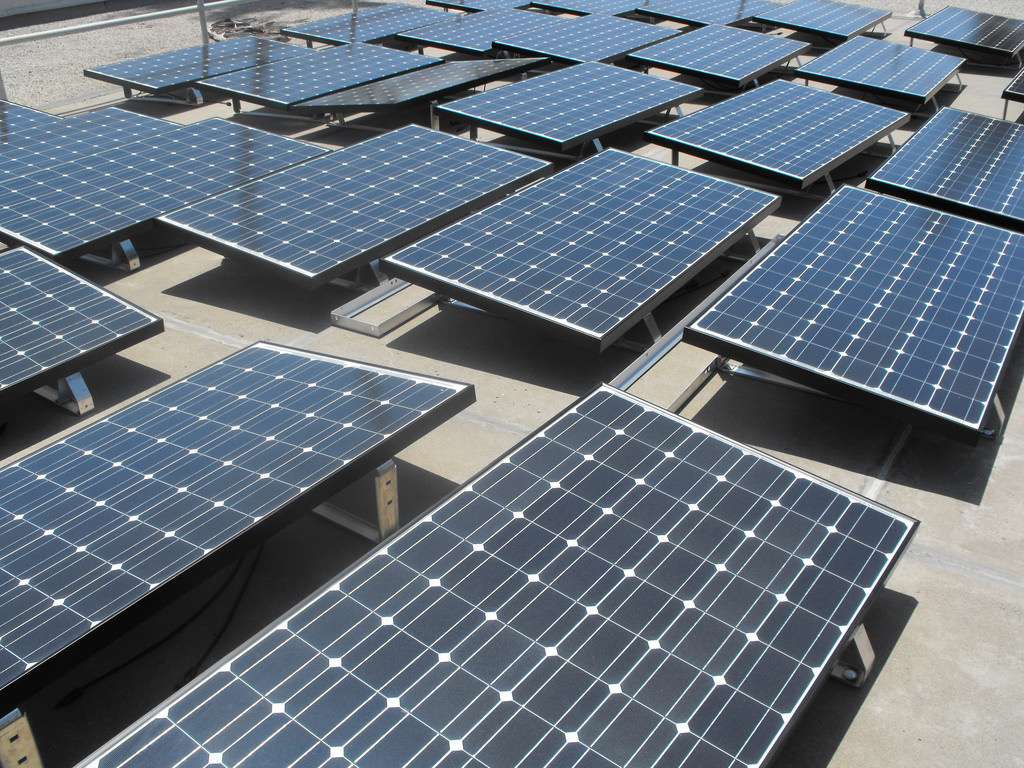Hillary's Solar Scheme Is Central Planning at its Worst
Why privilege solar over all the other technologies, including some that may not even be invented yet?


In a YouTube video released over the weekend, the leading Democratic candidate for president, Hillary Clinton, announced that "on day one as president," she would set "two ambitious national goals that will test our capacities." Said Clinton, "First, I will ensure we hit a target of having more than half a billion solar panels installed across the country by the end of my first term." You don't even have to wait for "ambitious national goal" number two to slap your forehead and roll your eyes at this example of top-down central planning at its worst.
Clinton assumes that man-made climate change is a risk serious enough to try to mitigate, and that America should try to mitigate it by reducing its carbon emissions. These are big "ifs," but ones I will grant for argument's sake. Even granting those assumptions, there is a humongous logical leap to the conclusion that the appropriate policy response is setting a national target for the number of solar panels installed.
For one thing, it's a classic error of measuring inputs rather than outputs. If the goal is the reduction of dangerous emissions, why not set a goal for that, and support any energy method—solar, wind, algae, hydroelectric, nuclear, hydrofracturing—that gets America closer to that goal? Why privilege solar over all the other technologies, including some that may not even be invented yet?
Even if one wanted, for some inexplicable reason, to prioritize solar, setting a goal in terms of number of panels installed is silly. That measure means an inefficient solar panel that produces a small amount of energy is worth the same, for government counting purposes, as a high-efficiency panel that produces a large amount of energy. It makes no sense. It would be like setting goals for hydroelectric power production in terms of the number of dams built — making Niagara Falls or the Hoover Dam worth as much as the tiniest beaver-dam equivalent at some small stream. It'd be like setting goals for a retail company in terms of stores opened rather than in terms of revenue or profitability.
Think about how most successful commercial innovation happens in history. Products catch on because they offer a better value proposition to consumers than the existing technology. No president needed to set an "ambitious national goal" of having 100 million personal computers or smartphones or automobiles sold; businesses and individuals adopted the technology on their own because it helped them do things that they could not do before, or at a lower cost than before. If solar offered cheaper, more reliable electricity than existing technologies, people would be putting up the panels for themselves without any government pushes or ambitious national goals.
Truth is, the technology (aided by subsidies from the Chinese government) is getting there; it's not quite there yet, though. Installing lots of less-than-optimally efficient solar panels too quickly isn't going to do anyone any favors; it'll just create a problem of how to get rid of them as the technology improves.
Some people who know a lot about energy are skeptical about solar. Microsoft founder and energy investor Bill Gates said in a 2014 interview, "Solar is much, much harder than people think it is. When the sun shines, electricity is going to be worth zero, so all the money will be reserved for the guy who brings you power when there's no wind and no sun." In a 2011 interview, Gates said, "I think people deeply underestimate what a huge problem this day-night issue is if you're trying to design an energy system involving solar technology that's more than just a hobby. You know, the sun shines during the day, and people turn their air conditioners on during the day, so you can catch some of that peaking load, particularly if you get enough subsidies. It's cute, you know, it's nice. But the economics are so, so far from making sense."
Investors and creditors have found that out the hard way; among the solar companies that have filed for bankruptcy protection during the Obama years are Satcon Technology Corp., Solyndra LLC, Evergreen Solar Inc., and Abound Solar.
Failure is part of free enterprise, of course. But where's the justice in taxing some scientist working on some other energy technology to subsidize the solar competition? If Clinton really wants to fight climate change or cut carbon emissions, there are plenty of ways to go about it. She could fund research and development for battery storage. She could set emissions goals and let utilities or states decide the cheapest and best ways to meet them. She could allow more hydrofracturing that replaces coal-fired plants with cleaner oil and natural gas. But counting solar panels? Come on, Clinton. Get serious.




Show Comments (27)